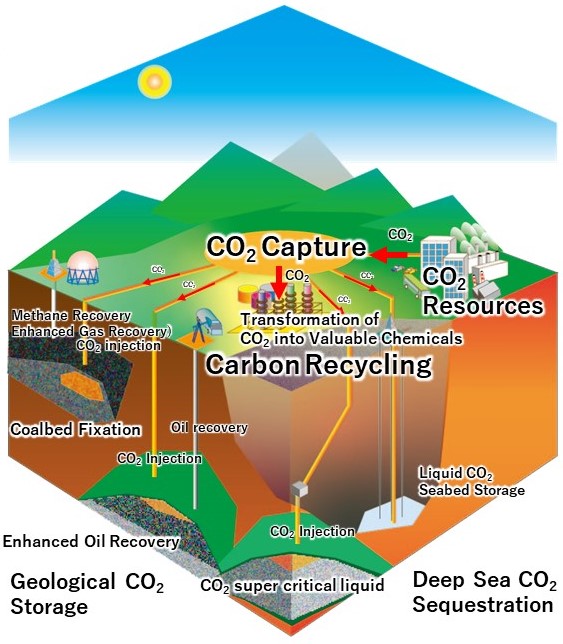Project Outline
Two Joint Research Projects for Environmental Science
In December 2015, the 21st Conference of the Parties (COP21) to the United Nations Framework Convention on Climate Change (UNFCCC) adopted an environmental policy agreement in Paris, France. It was the first environmental agreement in history with participation from all of the parties to the UNFCCCe. The Paris Agreement, which came into effect in 2016, set a long-term global target of limiting the temperature increase to 2°C and pursued efforts to limit the temperature increase to 1.5°C if possible. Following that, every five years, the global implementation status is reviewed, and all countries, including major emitting countries, update their reduction targets. Following the Paris Agreement, countries around the world have taken significant strides toward a decarbonized society. Japan aims to reduce greenhouse gas emissions to zero as a whole by 2050; that is, to realize a carbon-neutral and decarbonized society by 2050. As the CCUS (carbon capture, utilization and storage) initiative for CO2, the CO2 emitted from industries that have depended on fossil fuels (for example, the steel, cement, and thermal power generation industries) will be reduced as much as possible, and the emitted CO2 will be captured, stored, and used.

CCUS initiatives for CO2 will reduce the amount of emissions released into the atmosphere. Furthermore, if we aim for net zero emissions of CO2, initiatives for decomposing and reusing CO2 as a resource towards carbon recycling will be necessary in addition to those for capturing and using CO2. The Doshisha-Daikin Next Environment Research Center mainly conducts the following joint research.
(1) Development of technology for capturing, decomposing, and reusing CO2
(2) Development of environmental technology to improve energy efficiency extremely
The development of technology for capturing, decomposing, and reusing CO2 aims to contribute to the reduction of CO2 and to use CO2 as a resource. Doshisha university has a technology of extracting oxygen and carbon from CO2 by chemical manipulation. Daikin Industries also excels at the fluorochemical technology. This will be accomplished by combining these technologies. In the development of environmental technology that minimizes the amount of energy loss and improve the energy efficiency extremely, we will pursue further energy saving and improvement of material strength and corrosion resistance in the three fields of inverters, compressors, and heat exchangers, which are the main components of air conditioning systems. Based on these two pillars of joint research activity of our center, we plan to continue expanding new research themes.
The Doshisha-Daikin Next Environment Research Center was opened in 2020, which was also the year for reviewing the goals in the fifth year of the Paris Agreement. If we are able to realize the recycling of CO2 for contributing to a significant reduction in CO2, we can blaze a path from zero CO2 emissions to negative CO2 emissions. This will lead to a safer and more comfortable future where everyone can live comfortably.
|
Project Outline |